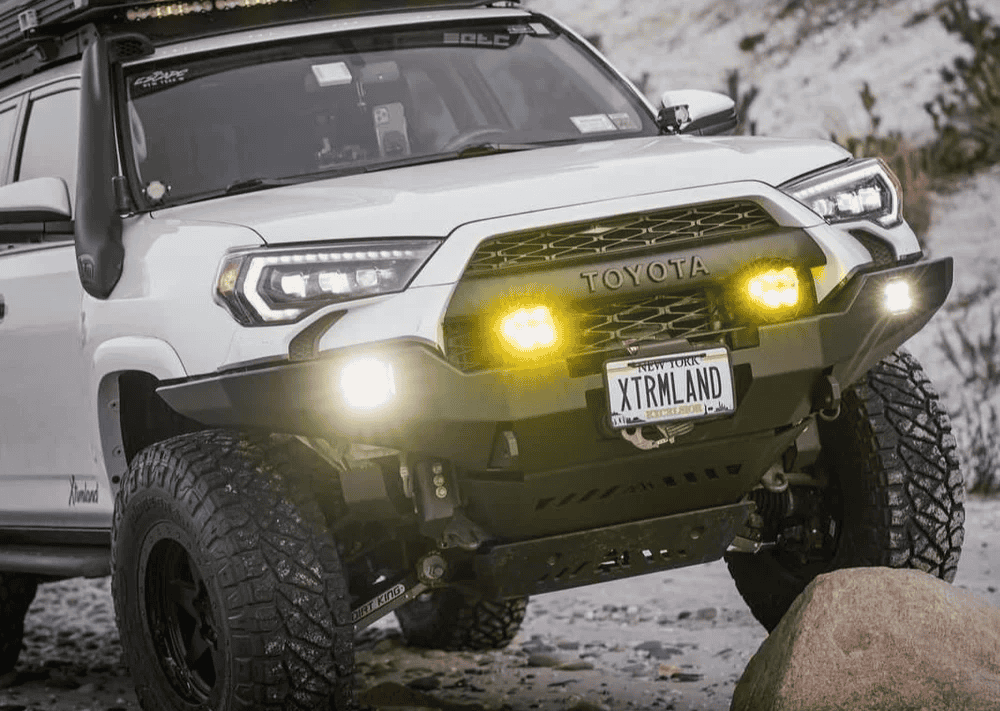Overland Vehicles

Low draw electrical design focuses on reducing every watt your system uses at rest and under load. Start with a simple budget: list each device, its current draw in amps, and expected daily hours of use. Convert to watt hours to see the real picture of energy in and energy out. Pay close attention to parasitic loads such as trackers, WiFi routers, displays, and chargers that sip power around the clock. A few small standby draws can equal the daily use of a fridge if left unchecked, so the biggest gains often come from trimming the always on items first.
Use a shunt based monitor to track system current at the battery. Log overnight draw with only essentials on to find hidden consumption. Clamp meters help verify appliance specs and reveal spikes during start up. Measure inverter idle and search mode usage, then decide if a DC alternative makes sense for high duty devices like fridges and fans.
Higher system voltage lowers current for the same power, which reduces cable size and voltage drop on long runs. A 24v backbone feeding DC DC converters for sensitive 12v loads can improve efficiency in larger builds. For compact layouts, a clean 12v architecture with short wire runs and correctly sized cable is often the simplest low loss path.
A low draw plan begins with native DC over AC wherever reasonable. Every inverter cycle wastes energy, and inverter idle can consume more power than your lights. Choose compressor fridges designed for mobile use, efficient DC roof fans, LED lighting with dimmers, and water pumps with smart pressure control. Use appliance sleep modes and hard switches so devices truly turn off, not just standby.
Think of charging as a portfolio. MPPT solar harvests best under sun with clean wiring and panel orientation, while a DC DC charger ensures safe alternator charging that respects lithium limits. Shore power is the periodic reset. Size each source so that any two together can recover a typical day of use, giving resilience in poor weather or short drive days.
Battery chemistry is pivotal. Lithium iron phosphate delivers high usable capacity and stable voltage across the discharge curve, which keeps DC appliances efficient. Pair a robust BMS with a properly fused distribution system. A precision shunt monitor gives real state of charge and trend visibility. Choose an inverter with low idle and a reliable search mode if you must power intermittent AC loads. For charging, match alternator output and cable size to your DC DC input to prevent heat and voltage sag that steal watts you worked hard to collect.
Automation pays dividends. A small controller can shed noncritical loads at a defined state of charge, dim lights at night, and disable phantom chargers. Timers for routers and entertainment systems stop the twenty four seven trickle. Fridge eco modes that widen hysteresis during sleep hours can shave meaningful watt hours without compromising food safety.
Heat is the enemy of efficiency and component life. Vent inverter and charger bays, keep solar controllers out of hot cavities, and route cables to avoid sharp bends that elevate resistance. Where possible, mount fridges with ventilation clearance and insulate the enclosure. Every degree of temperature control reduces compressor duty and extends runtime.
If this sounds like an orchestra, it is. Low draw results come from the way parts interact, not one magic component. Thoughtful layouts, correct wire sizing, tight terminations, and clean grounding prevent the kind of losses that do not show up on a spec sheet. The payoff is real: quieter nights, fewer charging stops, and batteries that last longer between cycles.
OZK Customs builds low draw systems into adventure vans and overland trucks, aligning components with how you actually travel. From battery banks and DC distribution to solar and alternator charging, our team designs for practical efficiency you can feel on day three off grid. Explore our approach to capable rigs on the Overland rigs page, and see how a well planned electrical backbone supports the rest of the build.
When you are ready to translate theory into hardware, our builders integrate efficient appliances, shunt based monitoring, and safe charging paths into complete vehicles. For a deeper look at tailored configurations and wiring practices, check our Custom overland upfit overview. Curious about process, craftsmanship, and client care from consultation to handoff in Fayetteville Arkansas? Learn more at Why choose OZK.
Tell us your route, your climate, and your must run devices. We will shape a low draw plan that trims waste, right sizes storage and charging, and makes off grid time feel easy. Built in Fayetteville Arkansas, delivered nationwide, and dialed in so your power system fades into the background while the trip takes center stage.
At OZK Customs, we design and build complete custom vans and overland rigs, plus partial upfits that elevate power, lighting, and charging. See what we create on Overland rigs, explore our Custom overland upfit options, and find out Why choose OZK for your next adventure build.
Ready to turn wasted watts into real range? Tell us how you travel and what you power. Our team will spec a right sized battery, charging, and distribution plan that cuts parasitic draw and boosts runtime. Share your build goals and get a custom low draw electrical strategy from OZK Customs.
ADDRESS:
6159 E Huntsville Rd, Fayetteville, AR 72701
PHONE:
(479) 326-9200
EMAIL:
info@ozkvans.com